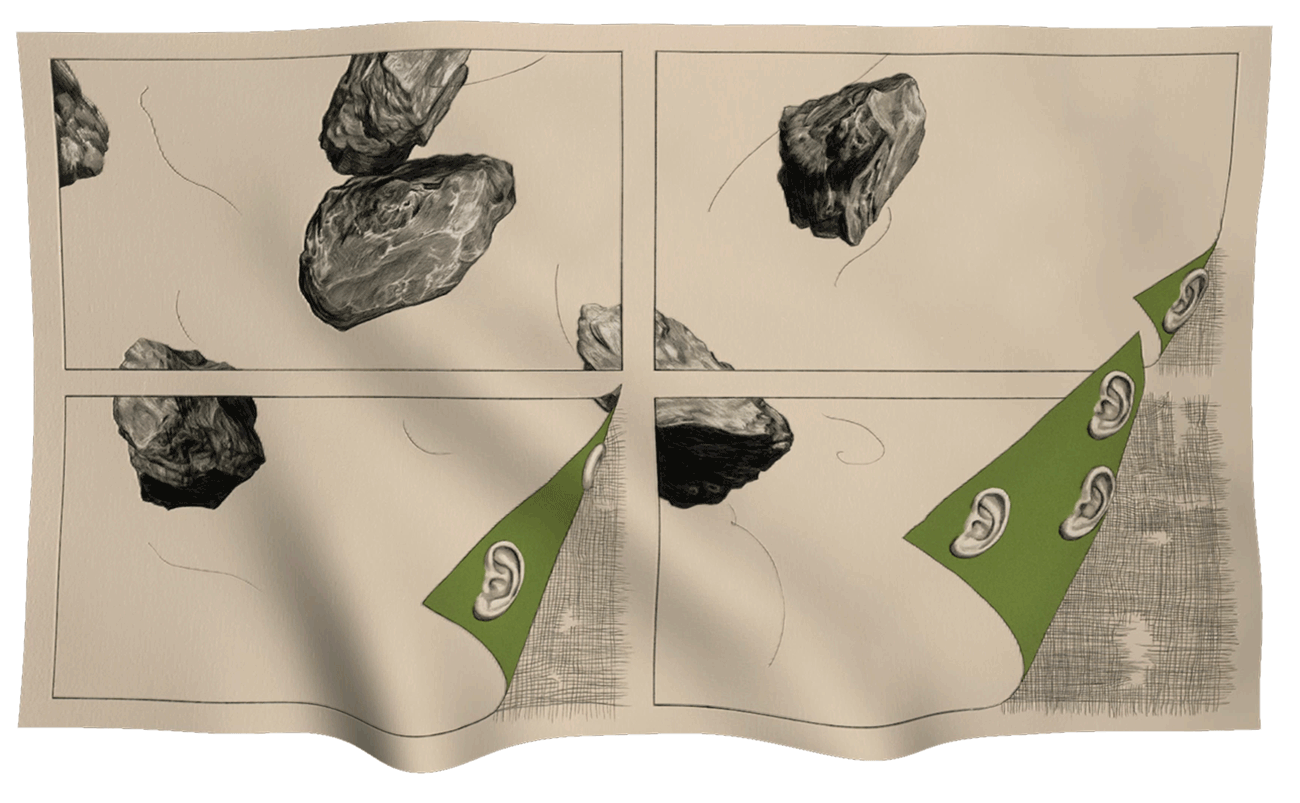
HARMAA manifesto: Towards an Indirect Philosophy
By HARMAA working group | Image Pauliina Mäkelä | Animation Matti Ranki
HARMAA is a philosophical and artistic reaction to the problems of what has come to be known as the post-truth era. These problems include information influencing, blurring of boundaries between legitimate sources of news and provocation, social media “bubbles”, the tendency of individuals to adapt to the manipulative aspects of the current media, and the carnivalisation of resistance as shared scorn towards outgroups. Responding to this state of social confusion, HARMAA proposes a philosophy that allows for freer ways of interaction and thinking than those offered by the culture of instant opinion formation, mediatisation of reality and political manipulation.
‘‘HARMAA combines art and philosophy to create content that stands in opposition to the currently popular attempts to win attention by provoking feelings of frustration and indignation.’’
The word harmaa (’harma:, rhymes with “karma”) is Finnish for “grey”, and for us, it signifies looking beyond the simplest “yes” and “no” positions towards possibilities and ambiguities. As a multidisciplinary work group, HARMAA combines art and philosophy to create content that stands in opposition to the currently popular attempts to win attention by provoking feelings of frustration and indignation. Instead of providing “the right solutions” or irrefutable arguments, indirect philosophy seeks to awaken the interlocutors’ sense of the possible and enhance their tolerance of ambiguity.
However, such “awakening” and “enhancing” must nevertheless be genuinely philosophical. In other words, we are not advocating philosophy as a form of self-help, self-improvement or as a way to successful life-management. Nor do we suggest that philosophers should act as public intellectuals or offer definite answers to how a just society should be ordered or how we should lead our lives. What is more, philosophising should not be limited the most technical forms of academic philosophy and peer-oriented scholarly communication. These approaches may secure a future in the neoliberal university, but they do little to make philosophical thinking available to the general public or to encourage philosophers to experiment with literary expression or visuality in the formation and presentation of their ideas.
To engage the attention of wider audiences in personal processes of wonder and self-critical thought, indirect philosophy combines different modes of expression, such as dialogue, visual elements and fictitious narrators, with philosophical reflection. Moreover, in our writing we employ and shift between various registers of language, including irony and humour. In our attempt we find inspiration in the history of philosophy as well, from thinkers such as Christine de Pizan, Margaret Cavendish, Friedrich Schlegel, Søren Kierkegaard, Friedrich Nietzsche and Walter Benjamin, though this list is far from exhaustive. On the side of visual expression, we create an imaginative space of an abundance of images, in which the viewers can dwell on their diverse associations. The images are inspired by the culture of visual “illusions” and, as a part of this, optical wizardry, early animations, anamorphoses, and hidden and double images, which make possible a visual treatment of the historical layers of believing and deceiving.
In addition to such epistemic and methodical objectives, indirect philosophy has an ethical objective: we emphasise the ethical in the practice of philosophy itself. As ethical action, philosophy makes room for marginalised discourses and creates possibilities for constructive criticism. It explores the experiential vulnerability suppressed by dominant categorisations and mass media discussions, prioritising responsiveness and sensibility, that is, our embodied and affective experience as well as our ethical attitude. Finally, an ethical philosophical practice provides an alternative to the technologies that permeate our awareness and the social climate. It gives voice to unheard stories and in-between states such as those between suffering and healing and not-knowing and knowing.


Leave a Reply